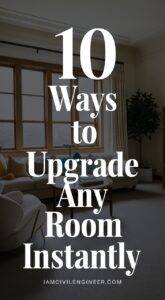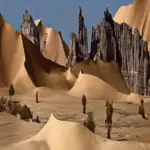Do you have physically challenged elders at home? Being in a physically challenged state often restricts people’s ability to move about freely within the home, especially getting to the upper floors.
If you are facing this particular issue, we have a comprehensive guide on how stairlifts are revolutionizing home accessibility for homeowners and can be the right solution for you.
Let’s take a look at the various benefits of stairlifts and how they can transform the lives of people with disabilities. We will be providing valuable insights and practical information to show you how stairlifts can enhance mobility within your home.

Understanding the Need for Home Accessibility
As homeowners, you have to make sure that you have living spaces that cater to the diverse needs of all family members.
If you have elderly family members or someone with mobility challenges, it becomes more difficult to make different parts of your home fully accessible.
Stairs, which are a simple and common architectural feature, can pose significant barriers. Enter stairlifts, a game-changer in the quest for a more accessible home.
The Mechanics Behind Stairlifts
Operating stairlifts is easy, as they have a simple yet ingenious mechanism, that uses a secure and smooth rail system installed along the staircase.
These stairlifts come with a user-friendly control panel, and they allow your elders to have a seamless and safe ride up or down stairs. This gives them a newfound sense of independence, and for the homeowners, it’s an accessible option to allow their elderly to move about freely.
The Versatility of Stairlift Installations
One of the best things about stairlifts is how easily they can adapt to different home layouts. Whether you have a straight staircase or one with curves and landings, modern stairlifts allow you to customize it to suit your specific needs.
Like Us on Facebook!
So whether you are looking for stairlifts for small spaces or ones that fit in larger stairs, there are plenty of options available for you.
Subscribe Us on YouTube!
Safety First: The Ergonomics of Stairlift Design
Since we are on the topic of stairlifts, let’s take a closer look at their meticulous design considerations that prioritize safety.
Manufacturers add features such as non-slip surfaces to comfortable seating, to create a secure and ergonomic user experience. Let’s take a look at the various safety features that make stairlifts a reliable solution for homeowners who seeking to navigate their homes with ease.
1. Seat Belts and Harnesses
Since safety is a top priority when ensuring mobility for your elderly family members, stairlifts come with secure seat belts or harnesses so that the users can remain securely in place during the journey. This feature makes it extra safe, particularly if your staircase has steep turns or inclines.
2. Swivel Seats with Locking Mechanisms
The seats on stairlifts have a swivel feature that is designed to rotate. This allows users to get on and off the lift easily. These seats often come with locking mechanisms, so there is no accidental movement while transferring. This makes it easier to ensure that the journey is safe and accident-free.
3. Obstruction Sensors
Modern stairlifts have advanced sensors integrated into them to detect any obstacles along the path. If an obstruction is identified, the stairlift automatically halts its movement. This effectively works to prevent any collisions, thus ensuring the safety of both users and the surrounding environment.
4. Pressure-sensitive Controls:
Stairlift controls often have a pressure-sensitive feature, which enables them to respond to the gentle touch of the user. This feature requires the user to make a deliberate input, enhancing safety and minimizing the risk of accidental activation, especially if your home has children or pets.
5. Emergency Stop Buttons
Stairlifts are equipped with emergency stop buttons that can be easily accessed by the users. If, in any case, the user feels uncomfortable or if an unexpected issue occurred, they can quickly halt the lift’s movement. This feature is great in providing immediate control and reassurance.
6. Battery Backup Systems
To address power outages or electrical issues, many stairlifts are equipped with battery backup systems. This way, users of the stairlift can carry on with uninterrupted service even during emergencies, allowing them to complete their journey even in the absence of electricity.
7. Smooth Start and Stop Mechanism
Stairlifts are designed with a smooth start and stop mechanism so that there are no abrupt movements during the journey. The users have a comfortable ride thanks to the gradual acceleration and deceleration. It also significantly reduces the risk of sudden jolts or jerks during transit.
8. Visual and Auditory Alerts
Stairlifts have the means to communicate important information to users by using visual and auditory alerts. This feature makes the stairlift more safe by making the user more aware. Alerts used in the stairlift include low battery warnings, impending stops, or reminders to fasten seat belts.
Enhancing the Aesthetics: Stylish Stairlift Solutions
Many people fear that installing a stairlift might mean sacrificing the aesthetics of the home. In reality, Stairlifts now come in various designs, which allows them to blend seamlessly with your home decor.
So, if you require to install a stairlift in your home, don’t hesitate to think that it will alter the decor of your home negatively. Rather, pick from the design that will enhance the look of your home and give the users the option of moving freely in all parts of the house.
The Economic Advantage: Investing in Home Accessibility
If you were considering moving to a single-story home or making extensive renovations to accommodate the disabled person in your home, you might be looking at quite a significant dent in your wallet.
Beyond the immediate benefits, stairlifts offer a cost-effective solution compared to home renovations or moving to a single-story dwelling. So, going with the stairlift option will be far more economical.
Conclusion
We have unveiled the numerous ways in which stairlifts are transforming home accessibility for homeowners. They have innovative designs, and the economic advantages and personal impact are huge, making stairlifts a beacon of independence.
Stairlifts are the future of home accessibility – so consider the installation of a stairlift and embark on a journey toward a more inclusive and welcoming living space. Make your home more accessible and enable users to move about with complete freedom.




















